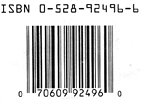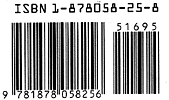| Getting Started with WordStock |
SKUs
SKU ("Stock Keeping Unit")is a general term that indicates a number or an alpha-numeric string assigned to an inventory item in order to facilitate inventory maintenance. Each inventory item has a unique SKU so that it can be easily distinguished all other inventory items. ISBNs and XISBNs are two types of SKUs.
ISBN ("International Standard Book Number") is a unique internationally-recognized SKU assigned specifically to books for the purposes of identification and inventory control.
Every book has an ISBN. An ISBN is a ten-digit number consisting of four parts, usually separated by hyphens:
- A group identifier that indicates a national or geographic group of publishers.
- A publisher identifier, the embedded Vendor number of the publisher.
- A title identifier that represents the specific title or edition of a title.
- A calculated check digit that confirms the validity of the ISBN.
Using ISBN 0-395-81662-6 as an example:
0 (indicating North America) is the group identifier.
395 (indicating Houghton Mifflin) is the publisher identifier.
81662 (indicating Dog Magic) is the title identifier.
9 is the check digit.
XISBNs
XISBNs are a type of SKU developed by WordStock. An XISBN consists of an "x" followed by up to five digits. You can assign XISBNs (X1-X99999) to items that do not have a UPC or ISBN, or to any item in your store.
Barcodes
For purposes of electronic scanning, a SKU is usually associated with a barcode. A barcode is a series of lines of varying width, printed on an item or a label, that can be read by an electronic scanner to determine the price of the item, and to recall other information from the item’s Inventory record.
WordStock 4 reads and prints two kinds of UPC barcodes:
UPC–A: The standard 12-digit UPC barcode. See Figure A3–1 below.
UPC–E: A 6-digit "compact" version of certain 12-digit UPC barcodes.
A UPC (Universal Product Code) number is the type of SKU associated with a UPC barcode. UPC numbers and UPC barcodes are used on many kinds of non-book merchandise and mass market paperbacks.

Fig. A3-1: A UPC-A Barcode
Bookland EAN (European Article Number) barcodes:
Bookland EAN (European Article Number) barcodes usually accompany ISBNs, and are printed on most books.
There are two kinds of EAN barcodes: EAN–8 barcodes: Contain ONLY the ISBN. EAN–13 barcodes: Contain the ISBN, and price data. See Figure A3-2 below.
WordStock 4 prints an EAN–13 equivalent barcode on all XISBN labels.

Fig. A3-2: An EAN-13 Barcode
|
|||||||||||||||||||||||||||